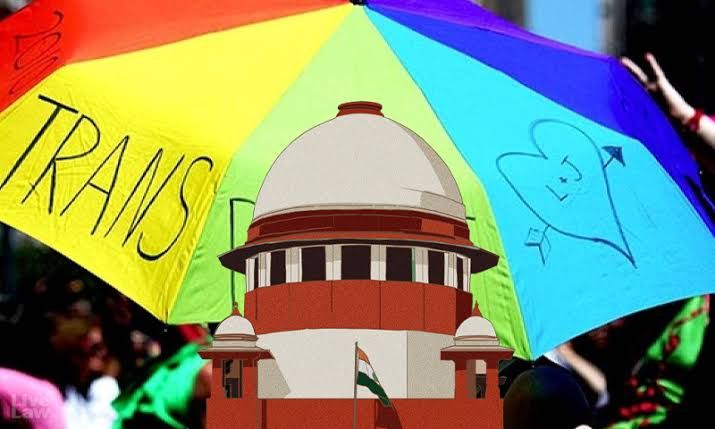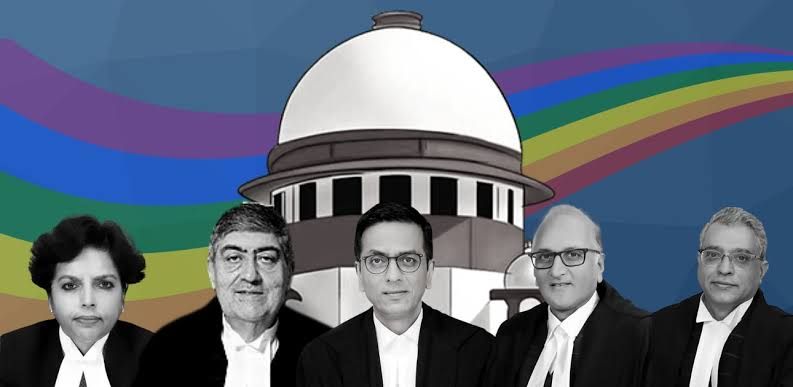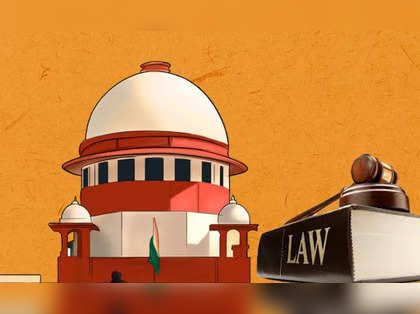Author: Anushka Sudarshan Deshpande,
Student of MIT-WPU School of law, Pune
- Abstract
This article explores the legal reasoning, ramifications, and position of the historic Navtej Singh Johar v. Union of India (2018) ruling, which decriminalised consensual homosexual acts in India, within the larger framework of constitutional law and human rights jurisprudence. A turning point in the development of LGBTQ+ rights in India has been reached with the Supreme Court of India’s decision to strike down Section 377 of the Indian Penal Code. This thorough analysis looks at the ruling from a number of angles, including comparative case law, legal principles, and the judgment’s overall societal effects.
- Introduction
A turning point in Indian constitutional law was reached in the Navtej Singh Johar v. Union of India (2018) case, which dealt with the conflict between social norms and individual rights. The goal of this case study is to present a thorough examination of the ruling, its supporting legal precedent, and its significant ramifications. We’ll look at the background of Section 377 in history, the arguments put forth by the parties, the logic used by the Court, and the implications of the ruling.
- Historical Context of Section 377
Origins and Enactment
In 1860, the British established a legal framework to govern colonial India, which included the introduction of Section 377 of the Indian Penal Code (IPC). British politician and historian Thomas Babington Macaulay created the IPC, which was a reflection of the strict moral and social norms of the Victorian era. The phrase “carnal intercourse against the order of nature,” which was purposefully left ambiguous but is understood to include homosexual acts, bestiality, and other non-procreative sexual behaviours, was specifically criminalised under Section 377.
Victorian Morality and Legal Imperialism
The moral and legal stances of Victorian England, which saw non-heteronormative sexual behaviour as immoral and abnormal, had a significant impact on the adoption of Section 377. Preceding Section 377 was the Buggery Act of 1533, which punished sodomy in England. This Act attempted to regulate and repress actions deemed sinful and abnormal, and its foundations were religious and moralistic beliefs.
The British colonists forced their moral code on Indian society by importing these legal standards into the country. This act of legal imperialism attempted to control individual morality through the legal system in addition to outlawing particular sexual behaviours. It is important to remember that pre-colonial Indian society had a variety of perspectives regarding sexual variation, many of which were more accepting.
Effects on Society and Law Enforcement
Section 377’s implementation had a significant and lasting effect on Indian society. The legal system was utilised as a weapon to oppress LGBTQ+ people in a systematic manner, leaving them vulnerable to social exclusion, harassment, and ongoing legal threats. Police and legal authorities arbitrarily targeted and persecuted people based on their perceived sexual orientation by misinterpreting the ambiguous language of Section 377.
Stigmatization and Marginalization
Within the LGBTQ+ community, the criminalization of homosexual acts under Section 377 has sustained a climate of fear, shame, and silence. Many people were forced to conceal their sexual orientation due to the stigma associated with homosexuality, which resulted in social isolation, identity crises, and psychological distress. The legalisation of discrimination created an atmosphere in which people who identify as LGBTQ+ were excluded and denied fundamental rights and safeguards.
Lack of Legal Recourse
People who were charged under Section 377 had limited legal options for many years. The fear of being exposed in public and the social fallout from being branded as “criminals” frequently discouraged victims from pursuing legal action or protesting the law. Due to the lack of legal options, discriminatory practices and societal prejudices against the LGBTQ+ community were strengthened, making them more invisible and vulnerable.
Early Legal Developments and Obstacles
Even with Section 377’s widespread effects, throughout the 20th century, there were periodic legal challenges and calls for reform. However, because of the deeply ingrained moral and cultural prejudices against homosexuality, these efforts encountered strong opposition.
Naz Foundation v. Government of NCT of Delhi (2009)
When the Naz Foundation, an NGO addressing HIV/AIDS issues, filed a petition in the Delhi High Court in 2001 contesting the constitutionality of Section 377, it marked a significant turning point. The petition claimed that the law infringed upon fundamental rights, such as the freedom of speech, equality, and privacy.
The Delhi High Court effectively decriminalised consensual homosexual acts between adults in private in 2009 when it read down Section 377 in a landmark decision. The rights to privacy, equality, and dignity served as the foundation for the court’s ruling. The ruling was hailed as a historic success for LGBTQ+ rights in India.
Suresh Kumar Koushal v. Naz Foundation (2013)
The triumph, though, was fleeting. In the 2013 case of Suresh Kumar Koushal v. Naz Foundation, the Delhi High Court’s ruling was overturned by the Supreme Court of India. The Supreme Court upheld the criminality of homosexual acts, stating that the legislature ought to be in charge of changing or removing the legislation and that the judiciary was not the proper forum to handle such matters.
Widespread disappointment and criticism were expressed both domestically and internationally in response to the Koushal ruling. It was viewed as a major blow to LGBTQ+ equality and human rights in India. The ruling inspired civil society organisations, legal scholars, and activists to step up their efforts to contest Section 377 and promote LGBTQ+ rights.
The Role of Activism and Advocacy
The decriminalisation of homosexuality in India gained impetus due to persistent activism, public engagement, and advocacy. Human rights groups, LGBTQ+ activists, and supporters from a range of industries came together to raise awareness, dispel myths, and advance legislative changes. The media, academia, and well-known individuals among others started to advocate for decriminalisation and support LGBTQ+ rights, causing a shift in public opinion.
The Road to Navtej Singh Johar
The Supreme Court case Navtej Singh Johar v. Union of India, which resulted from the filing of petitions by well-known people and organisations, marked the culmination of the legal battle against Section 377. The petitioners claimed that Section 377 violated fundamental rights protected by the Indian Constitution and was therefore unconstitutional. The historic ruling in Justice K.S. Puttaswamy v. Union of India (2017), which acknowledged the right to privacy as a fundamental right, supported their claims.
Decades of struggle, legal battles, and advocacy for LGBTQ+ rights in India culminated in the Navtej Singh Johar case. The Supreme Court’s ruling to strike down Section 377 was a major turning point in the LGBTQ+ community’s quest for justice, equality, and dignity.
- The Proof
Arguments of Petitioners
In the Navtej Singh Johar v. Union of India case, the petitioners made strong claims that Section 377 violated a number of fundamental rights protected by the Indian Constitution. Their arguments were based on the values of liberty, equality, nondiscrimination, and freedom of speech.
Article 14: Equitable Treatment
The petitioners contended that Section 377 contravened Article 14, which upholds the right to equal protection under the law and equality before the law in India. They argued that by outlawing consensual homosexual acts but allowing consensual heterosexual acts, the provision created an arbitrary and unreasonable classification. They claimed that this discriminatory distinction was unconstitutional because it lacked a justification.
Arbitrarily Classified: The petitioners highlighted that Section 377 imposed a classification system that was unfair and arbitrary, dividing people based only on their sexual orientation. They maintained that the law was fundamentally unfair and unconstitutional because such discrimination was neither reasonable nor justified by any objective standards.
Violation of Equal Protection: Section 377 denied LGBTQ+ people the legal protections of equal protection by making consensual homosexual acts illegal. The petitioners argued that this contributed to social exclusion and systemic inequality in addition to stigmatising and marginalising a vulnerable group.
Article 15: Discrimination Is Prohibited
The petitioners claimed that Article 15, which forbids discrimination on the basis of religion, race, caste, sex, or place of birth, was broken by Section 377. They contended that because discrimination based on sexual orientation is inherently linked to gender and sexual identity, it ought to be categorised as sex discrimination.
Article 15’s “Sex” inclusiveness: The petitioners asked the Court to read Article 15’s “Sex” broadly to encompass sexual orientation. They contended that this interpretation was in line with the Constitution’s cherished values of equality and nondiscrimination.
Effects of Discrimination: The petitioners emphasised the negative effects of Section 377 on people who identify as LGBTQ+, such as psychological trauma, social exclusion, and denial of fundamental rights.
Article 19: Right to Free Speech
The petitioners claimed that Section 377 violated Article 19, which protects the right to free speech and expression. They maintained that LGBTQ+ people’s freedom to express their identity and sexuality was hampered by the legalisation of consensual homosexual acts.
Chilling Effect on Expression: According to the petitioners, LGBTQ+ people are prevented from openly expressing their sexual orientation by the threat of criminal prosecution under Section 377. They contended that their constitutional right to freedom of speech and expression was being directly violated by this suppression of self-expression.
Impact on Identity and Dignity: The petitioners highlighted that a person’s identity and dignity were inextricably linked to their capacity to express their sexual orientation. They contended that the limitations of Section 377 not only not only stifled free speech but also compromised the self-worth and independence of LGBTQ+ people.
Article 21: Personal Liberty and the Right to Life
The petitioners emphasised that Article 21, which protects the right to life and personal liberty, was broken by Section 377. They contended that people’s private sexual activities were covered by the right to privacy, which was maintained in the historic ruling of Justice K.S. Puttaswamy v. Union of India (2017).
Right to Privacy: The petitioners claimed that the criminalization of consensual homosexual acts under Section 377 amounted to an unfair invasion of people’s personal space. They contended that the freedom to make private decisions about oneself without undue intervention from the government was a part of the right to privacy.
Dignity and Autonomy: The petitioners stressed that the right to live in a dignified and independent manner was guaranteed by Article 21 along with the right to life and personal liberty. They argued that LGBTQ+ people’s fundamental rights were violated by Section 377’s punitive measures against consensual sexual acts, which violated their personal autonomy and dignity.
Arguments Made by the Respondent
At first, the respondent, the Union of India, maintained that Section 377 was constitutional, citing it as a legitimate legislative exercise intended to protect public health and morals. But as the case progressed, the government’s position changed, and in the end, it deferred to the Court’s judgement.
First Defence of Section 377 Public Morality: According to the respondent, the purpose of Section 377 was to protect social norms and public morality. They argued that the law’s main goal was to control sexual behaviour that was considered abnormal and that it was a reflection of society values and prevailing moral standards.
Public Health Concerns: The respondent also expressed worries about the potential rise in sexually transmitted diseases (STDs) if homosexual acts are decriminalised. They maintained that Section 377 discouraged actions that might endanger the public’s health.
Change in Position Judicial Deference: As the hearings went on, the Union of India took a more impartial stand, recognising the growing acceptance of LGBTQ+ rights and the changing views of society regarding homosexuality. The government declared its respect for the judiciary and its willingness to abide by the Court’s ruling in this case.
Legislative Domain: The respondent further contended that the legislature had jurisdiction over the matter of decriminalising homosexual acts. They recommended that legislative processes, as opposed to judicial intervention, should be used to amend Section 377.
- Legal Principles and Reasoning
Article 14: Equal Rights
The Court underlined that Section 377 violated people’s right to equality by discriminating against them based on their sexual orientation. It was decided that it was unconstitutional to arbitrarily distinguish between consensual heterosexual and homosexual acts.
Article 15: Right to Non-Discrimination
The ruling emphasised that discrimination on the basis of sexual orientation is prohibited by Article 15. The Court emphasised how crucial it is to treat every citizen equally and with inclusivity.
Article 19: Right to Freedom of Expression
It was discovered that Section 377 of the inhibits the ability of LGBTQ+ people to express themselves freely. Their freedom to publicly express who they were was restricted by their fear of criminal prosecution.
Article 21: The Right to Life and Personal Liberty
The Court upheld the recognition in Justice K.S. Puttaswamy v. Union of India (2017) that the right to privacy encompasses sexual orientation. The invasion of people’s privacy by Section 377 was considered an insult to their autonomy and sense of dignity.
Comparative Jurisprudence
Texas v. Lawrence (2003)
In Lawrence v. Texas, the US Supreme Court upheld laws that criminalised homosexual behaviour while highlighting people’s right to privacy and liberty. The Indian Supreme Court’s reasoning was strengthened by this ruling.
Minister of Justice v. National Coalition for Gay and Lesbian Equality (1998)
The South African Constitutional Court overturned laws that made homosexual behaviour consenting to be homosexual illegal, emphasising the value of equality and dignity. Additionally, this case was used to support the worldwide decriminalisation trend.
- Impact and Aftermath
Social and Legal Consequences
There have been significant legal and societal ramifications from the Navtej Singh Johar ruling. In India, it was a major step towards the acceptance and acknowledgement of LGBTQ+ rights. Calls for more reforms, such as the acceptance of same-sex marriages and anti-discrimination laws, have been sparked by the ruling.
Ongoing Difficulties
The LGBTQ+ community in India still experiences discrimination and social stigma even after consenting to homosexual acts was decriminalised. The path to complete acceptance and equality is still being travelled.
- Conclusion
In the history of Indian constitutional law, the 2018 case of Navtej Singh Johar v. Union of India is significant. The Supreme Court of India affirmed the values of equality, dignity, and individual liberty by striking down Section 377. In addition to righting a historical wrong, this ruling cleared the path for a society that is more inclusive and just. But there are still many obstacles in the way of the LGBTQ+ community’s full equality, calling for ongoing advocacy and legislative changes.
- FAQs
- What role did the Navtej Singh Johar case play?
The case was noteworthy because it advanced the rights and dignity of the LGBTQ+ community by decriminalising consensual homosexual acts in India.
- How did the Court defend its interpretation of Section 377?
The Court cited Section 377’s violations of fundamental rights under Articles 14, 15, 19, and 21 of the Indian Constitution as justification for its ruling.
- What effect did the ruling have on the community of LGBTQ+ people?
By decriminalising homosexual activity, lessening legal discrimination, and promoting greater acceptance and inclusivity, the ruling had a positive effect.
- Does the LGBTQ+ community face legal obstacles in India still?
True, the LGBTQ+ community in India still faces legal obstacles in spite of the ruling, such as the absence of anti-discrimination legislation and the legalisation of same-sex unions.
- What is the difference between this case and global LGBTQ+ rights jurisprudence?
The ruling is consistent with global legal precedent, including the rulings in South Africa and Lawrence v. Texas, which have recognised the rights of LGBTQ+ people and decriminalised homosexual behaviour.




